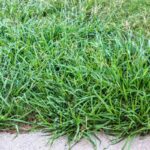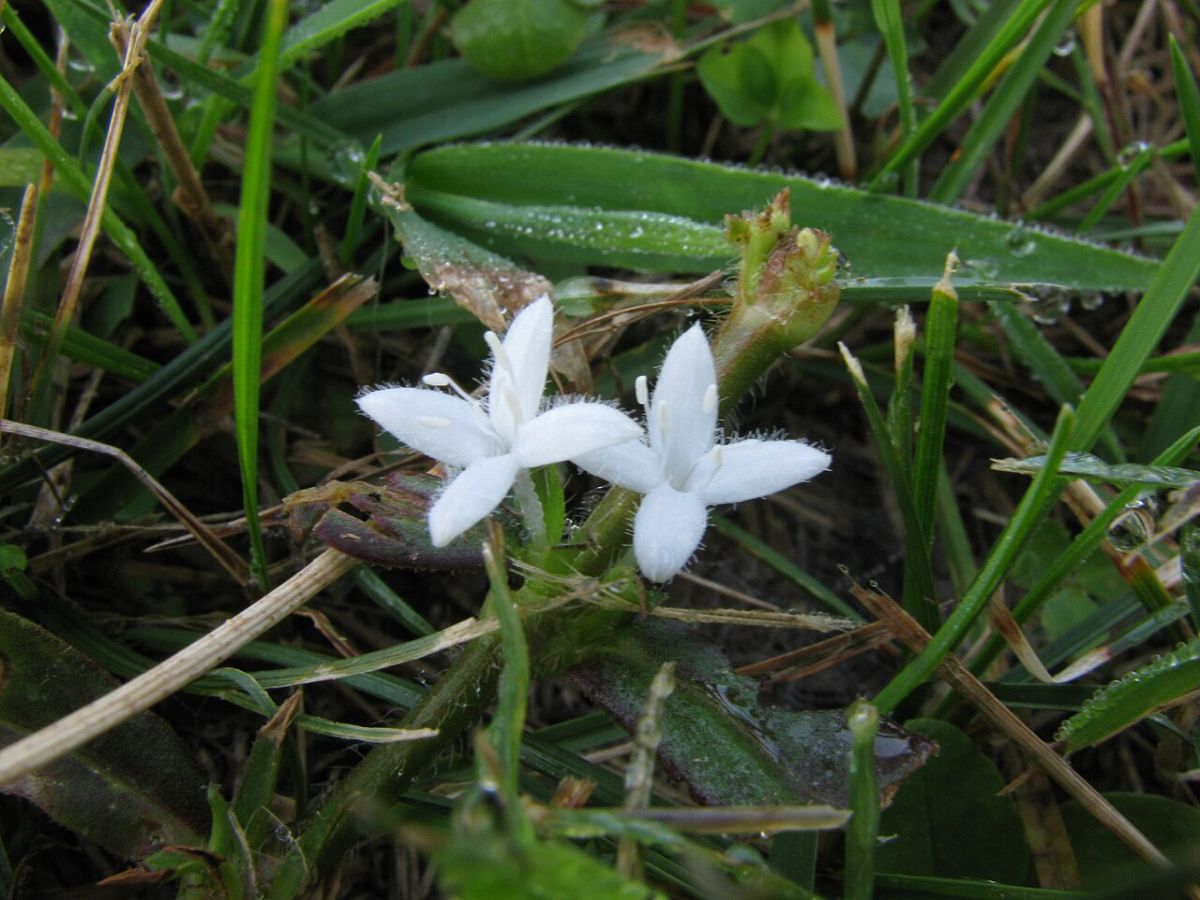
Battling Virginia buttonweed is like playing whack-a-mole in your backyard: just when you think you’ve got it, it pops up again. Luckily, learning how to get rid of Virginia buttonweed is easier than you think —you just need to identify it and spray the right post-emergent herbicide.
Herbicides that target Virginia buttonweed include Blindside, Triplet, and Celsius. In this article, we’ll guide you through the step-by-step process of eradicating Virginia buttonweed from your lawn and share some practical tips to tackle it head-on.
6 Easy Steps to Get Rid of Virginia Buttonweed
Summers mean barbecues, sunshine, and, unfortunately, the stubborn return of Virginia buttonweed. Pulling it out by hand doesn’t always work because those sneaky roots or fragments left behind can grow back into a full plant. And even if you mow it down, its seeds can survive, spread, and sprout next summer.
So, what can you do? Well, below you have a detailed plan that will give you a fighting chance. You can tackle all the steps yourself in one afternoon, but if you’re not familiar with lawn care, we recommend calling a local pro —otherwise, you might end up killing your grass in the process.
Disclaimer: This plan doesn’t guarantee success — Virginia buttonweed is stubborn, and whether you’re able to kill it or not depends on several factors, such as the extent of the infestation, the timing of your herbicide applications, and the overall health of your lawn.
Step 1: Identify the Enemy
Before you start any treatment, you need to identify whether you’re dealing with Virginia buttonweed or another similar weed, like doveweed (check out “What Does Doveweed Look Like?”).
Virginia buttonweed, scientifically known as Diodia virginiana, is a broadleaf perennial weed native to the eastern United States, stretching from Florida and Texas all the way up to the southern edge of New England. However, it thrives in warm-season climates, which is why it’s most common in lawns across the Southeast.
Here’s what Virginia buttonweed looks like:
- Leaves: Look for small, lance-shaped leaves (growing in pairs across the stem) with a dark green top and a lighter green underside. They have a slightly rough edge and can be up to 2 inches long and about one-half inch wide.
- Stems: The stems are hairy and lie flat on the ground. They can root at the nodes (where the leaves attach), making them tricky to remove fully.
- Flowers: Keep an eye out for tiny white flowers with four petals that grow in the leaf axils (where the leaf meets the stem). Each flower is about one-half inch in diameter and blooms from June to September.
- Fruits: The fruit is a small, green capsule that turns brown as it matures. These capsules are about one-quarter inch long and contain multiple seeds. When the capsule splits open, it releases tiny seeds that can remain viable in the soil for many years.
Step 2: Inspect Your Yard
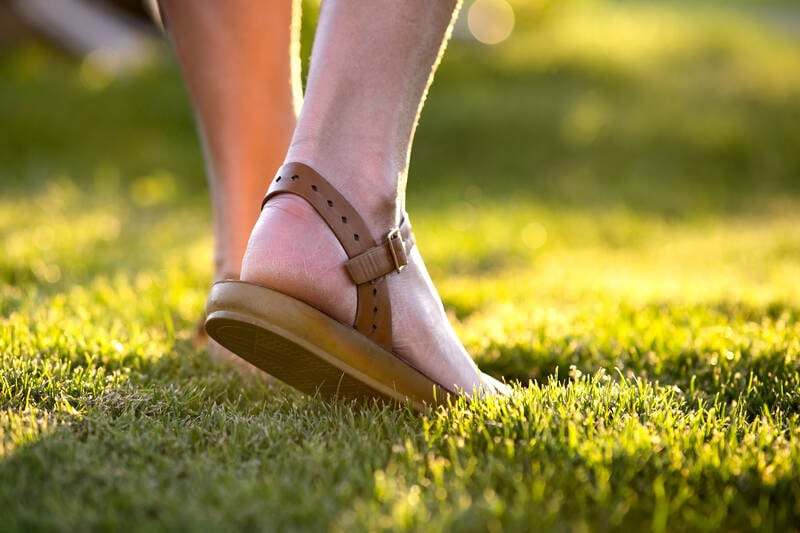
Now that you know what Virginia buttonweed looks like, it’s time to hunt it down in your yard.
This weed doesn’t spread out evenly but rather grows in clumps, so you’ll need to look for clusters that stand out from your grass (e.g., patches that look yellow or mottled against the green turf). You’ll typically see them thriving in warm-season grasses like Bermudagrass, but they can still show up if your lawn is overseeded with a cool-season variety.
To check the extent of the infestation on your lawn:
- Check moist areas: Virginia buttonweed loves damp, poorly drained places. Look around zones where water tends to pool after rain or near sprinkler heads.
- Examine bare patches: This weed often invades bare or thin spots where grass isn’t growing well. For instance, if you’ve recently reseeded a part of your lawn and the grass hasn’t filled in completely, examine the area closely.
- Inspect edges and borders: Look along the edges of sidewalks, driveways, and flower beds. Buttonweed can spread into these areas from neighboring properties or other parts of your yard.
- Focus on sunny spots: Virginia buttonweed thrives in full sun, so check any open area in your lawn that gets direct sunlight most of the day.
- Check over-fertilized zones: If some parts of your lawn look extra lush and green, they might be over-fertilized. While this looks great at first, it can create an imbalance that’s perfect for this weed to grow.
Step 3: Choose the Right Herbicide
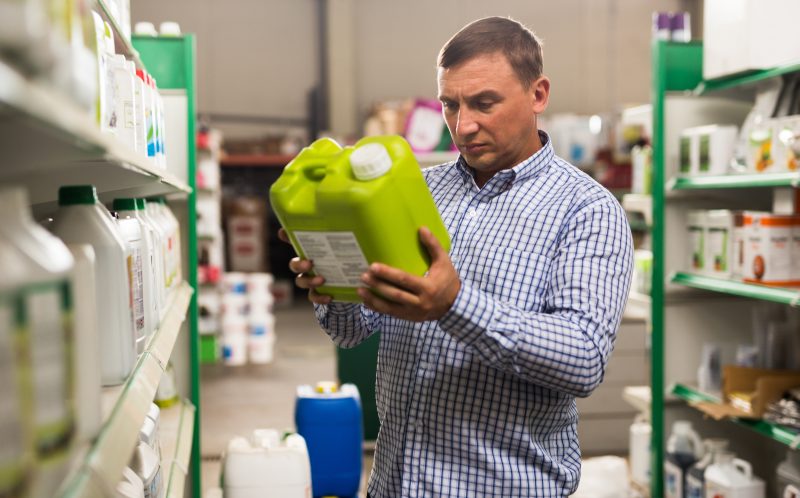
As we mentioned above, trying to control Virginia buttonweed by hand pulling or mowing just doesn’t work. The most effective way to get rid of it is to use liquid post-emergent herbicides and apply them multiple times over the season.
These are some of the top post-emergent herbicides for Virginia buttonweed control:
- Blindside
- Celsius
- Trifloxysulfuron
- Triplet
- Confront
- Q4 Plus
- Escalade II
If you’re not sure what’s best for your yard, or you need more advice on herbicides, reach out to your local extension office or check our review” “8 Best Post-Emergent Herbicides of 2024.”
Why not use pre-emergent herbicides? Experts report that pre-emergent herbicides are inconsistent against Virginia buttonweed. In contrast, post-emergent herbicides are designed to target weeds that are already growing. They’re absorbed by the leaves and stems and kill the plant from the inside out.
Selective vs. Non-Selective Herbicides: What’s the Difference?
Now, the best herbicide for Virginia buttonweed depends on your specific situation and goals. If you have a well-established lawn with scattered patches of buttonweed, you’ll want to use a selective herbicide. They’re usually the go-to choice for most homeowners because they target specific types of plants (e.g., broadleaf weeds) without damaging your grass.
On the other hand, if you’re dealing with a large, dense infestation that’s taking over your lawn, a non-selective herbicide like Roundup might be a better choice. These kill any vegetation they come into contact with.
Step 4: Gather the Materials

Once you’ve chosen your post-emergent herbicide, make sure you have the right safety gear and equipment before you start applying it. Here’s a quick checklist:
- Gloves
- Goggles
- Long-sleeved shirt and pants
- Face mask
- Protective footwear
- Measuring cup
- Handheld or backpack sprayer
Step 5: Apply the Post-Emergent Herbicide
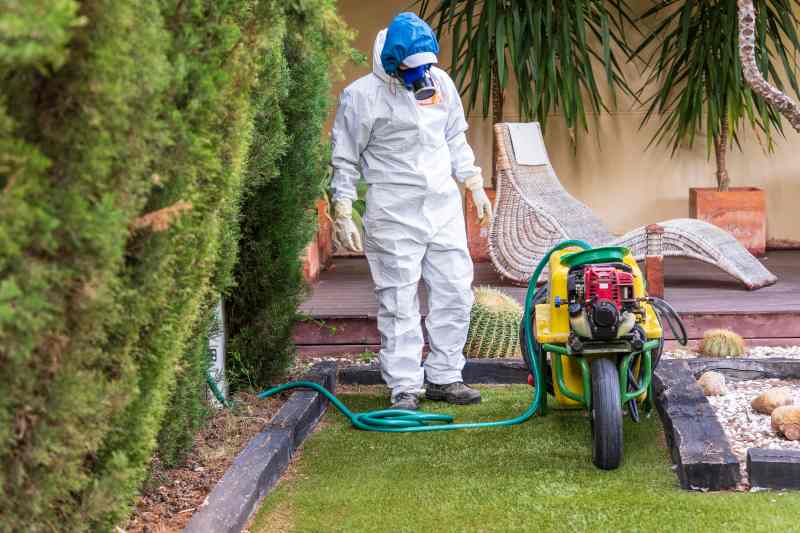
Now it’s time to roll up your sleeves and get to work. Since we’re focusing on spot-treating Virginia buttonweed, liquid weed killer is your best bet. Applying it isn’t difficult, but following the instructions on the label is super important. This way, you’ll make sure it works effectively and prevent any damage to your lawn.
For a full breakdown of everything you need to know about using post-emergent herbicides, check out our guide: “Applying Post-Emergent Herbicides to Your Lawn.”
In a nutshell, this is what you need to do:
- Start by reading the label on your herbicide. It’s packed with important information on mixing ratios, safety precautions, and application techniques.
- Then, make sure your sprayer is calibrated. This means adjusting the settings so it applies the herbicide at the recommended rate.
- Next, mix it with water. Take a measuring cup and follow the manufacturer’s instructions for how much herbicide to add to the water in your sprayer.
- If you’re using a non-selective herbicide, be careful because it’ll kill nearby grass. To minimize damage, spot-treat with a narrow spray pattern and avoid windy days. This gives you more control and helps reduce spray drift.
- After that, spray directly onto the weeds, making sure to cover the leaves thoroughly.
- Finally, clean up. Rinse out the sprayer and any measuring tools with water, and dispose of any leftover herbicide according to the label’s instructions.
Pro Tip: For best results, use a sprayer that delivers at least 1 gallon of mix per 1,000 square feet, and aim for a small droplet size (200 to 300 microns). Smaller droplets provide better coverage and are less likely to drift away from your target.
Step 6: Monitor and Reapply
Virginia buttonweed is persistent, so don’t expect overnight results. Start spot-treating Virginia buttonweed in spring, monitor the treated areas, and follow up with more applications throughout the summer.
How many more? That will depend on the severity of the infestation and the effectiveness of your initial application. Most manufacturers include recommended reapplication intervals on the product label, so make sure to check those.
Bonus Tip: If you have a large area to treat, consider adding a dye indicator in your mix to easily see where you’ve sprayed and avoid missing any spots. You can get them online or at most gardening stores.
How to Prevent Virginia Buttonweed
Given the aggressive nature of Virginia buttonweed, prevention is key. It all boils down to making your yard a much less inviting place for this weed to settle in. The healthier your lawn, the harder it is for weeds to flourish. Here’s what to do:
- Mow high and often. Mow your lawn regularly, but don’t cut the grass too short. Adjust your mower to the tallest setting recommended for your type of grass. This helps shade the soil, making it harder for Virginia buttonweed seeds to sprout.
- Fertilize on time. Stick to a fertilization schedule that works for your grass type and local climate. A well-fertilized lawn is more competitive and less likely to be overtaken by weeds.
- Water wisely. Deep soaks are better than daily sprinklers. This encourages your grass roots to dig down deep, making your lawn stronger and better at fighting off buttonweed.
- Overseed thin areas. Bare patches in your yard are like a “Vacancy” sign for Virginia buttonweed. Overseed your lawn with a grass seed that thrives in your area and complements your existing turf.
- Manage moisture levels. Make sure your lawn has good drainage so water doesn’t pool up, because buttonweed loves soggy conditions. Not sure how to do it? Check out this article: “7 Ways to Improve Drainage in Your Yard.”
- Address pests or diseases. Watch out for common lawn diseases and pests that can weaken your grass. If you see any, deal with them quickly.
FAQs About Removing Virginia Buttonweed
How do you kill Virginia buttonweed without killing grass?
The best way to eliminate Virginia buttonweed without killing your grass is by using a targeted weed spraying approach. Opt for a post-emergent liquid herbicide that works with broadleaf weeds and target the Virginia buttonweed leaves directly instead of spraying your entire lawn.
Will baking soda kill Virginia buttonweed?
There isn’t enough evidence to support baking soda as an effective control method for Virginia buttonweed. It might have some mild herbicidal properties, but it’s not strong enough to tackle it. If you want to get reliable results, using a post-emergent herbicide is the smartest move.
Can you pull up Virginia buttonweed?
Yes, you can pull Virginia buttonweed, but it’s not the best option. This weed has a spreading root system, which means you’ll have a hard time removing it completely —especially if it’s been growing for a while. What’s more, even if you think you’ve gotten the whole plant, missing even a tiny root fragment can cause it to spread further.
Turn Your Buttonweed Woes Over to the Pros
When it comes to dealing with Virginia buttonweed, the best offense is a strong defense. On your own, that means spending your weekends researching herbicides, battling with sprayers, and maintaining your grass. But with a lawn care expert by your side, you’ll have a healthy, weed-free yard without breaking a sweat.
A lawn care expert can nourish a healthy lawn and prevent a Virginia buttonweed infestation from returning. Contact a lawn care pro in your area today to handle the weed control, fertilizing, and other turf chores.
Main Photo Credit: Jomegat / Wikimedia Commons / CC BY-SA 3.0
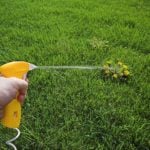
![8 Best Post-Emergent Herbicides of 2024 [Reviews]](https://www.lawnstarter.com/blog/wp-content/uploads/2021/11/Best-Post-Emergent-Herbicides-150x150.jpg)
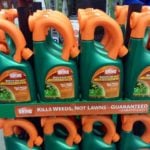
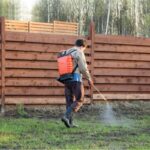
![8 Best Pre-Emergent Herbicides for Lawns [Reviews]](https://www.lawnstarter.com/blog/wp-content/uploads/2021/11/Best-Pre-Emergent-Herbicide-150x150.jpg)
